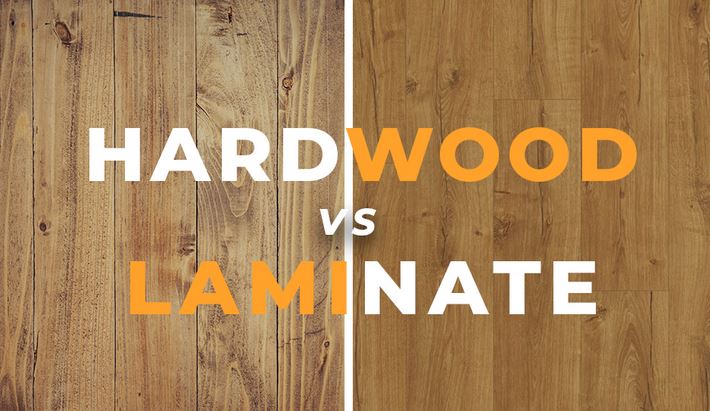When it comes to deciding between laminate and hardwood flooring for your home or office, making the right choice can feel overwhelming. In this comprehensive guide, we delve into the pros and cons of both flooring types, compare durability, maintenance, cost, and aesthetics, to help you make an informed decision.
Understanding the Key Differences
Laminate Flooring
Laminate flooring is a popular choice due to its affordability, durability, and low maintenance. It is constructed using multiple layers, with a high-resolution photographic image on top, replicating the look of wood. This image is sealed with a protective layer for added durability.
Hardwood Flooring
Solid Hardwood flooring is made from solid wood planks and is available in various wood species. Whereas Engineered hardwood flooring is composed of multiple layers. The top layer is genuine hardwood, displaying the grain and colour you’d expect from any hardwood floor The timeless elegance of hardwood floors adds warmth and character to any space. However, it comes with a higher price tag and requires more maintenance compared to laminate flooring.
Durability and Longevity
Laminate Flooring: Laminate floors have a protective top layer that makes them resistant to scratches, dents, and fading. However, they cannot be sanded or refinished like hardwood floors. Laminate flooring typically lasts 10-25 years, depending on the quality and wear layer.
Hardwood Flooring: Hardwood floors are highly durable and can last a lifetime with proper care. However, they are prone to scratches and dents, especially in high-traffic areas. The lifespan of hardwood floors can be extended with regular refinishing.
Cost and Value for Money
Laminate Flooring: Laminate floors are more affordable than hardwood floors, which makes them a popular choice for budget-conscious homeowners. The lower cost does not necessarily mean a compromise on quality, as many high-quality laminate options are available.
Hardwood Flooring: Despite the higher initial cost, hardwood floors can increase the resale value of a property and remain a long-term investment.
Aesthetics and Style
Laminate Flooring: Modern laminate flooring offers a wide range of styles, colours, and finishes that convincingly mimic the appearance of hardwood. Some high-quality laminates can be almost indistinguishable from real wood. However, they may lack the natural warmth and texture of hardwood floors.
Hardwood Flooring: Hardwood floors have a timeless appeal that adds character and warmth to any space. The natural variation in wood grain patterns and colours offers unique aesthetic qualities. Hardwood floors can be refinished to update their look, providing versatility in style over time.
Ease of Installation
Laminate Flooring: Laminate floors are designed for easy installation, with most products featuring a click-lock system. This allows for a quick and straightforward DIY installation, reducing costs and time.
Hardwood Flooring: Hardwood floors require professional installation due to the complexity of the process. They can be installed using nails, staples, or glue, depending on the subfloor and wood type.
Maintenance and Cleaning
Laminate floors are low-maintenance and easy to clean. Regular sweeping or vacuuming, along with occasional damp mopping, is sufficient to keep them looking their best. However, excessive water exposure can cause damage, so it’s crucial to avoid standing water or wet mopping.
Hardwood Flooring: Hardwood floors require more maintenance than laminate floors. Regular sweeping and vacuuming are necessary to prevent scratches from dirt and debris. Use a damp mop or specialised hardwood floor cleaner for occasional cleaning. Periodic refinishing may be needed to restore the appearance and protect the wood.
Environmental Impact
Laminate Flooring: Laminate flooring is typically manufactured from High-Density Fibreboard (HDF) made from wood by-products. This utilises waste materials and makes laminate floors a more sustainable option. Additionally, the production process is energy-efficient, and many laminate products have low VOC (Volatile Organic Compound) emissions.
Hardwood Flooring: Hardwood floors have a larger environmental footprint due to deforestation concerns. However, many sustainable and ethically sourced hardwood flooring options are available. Look for products with certification from organisations such as the Forest Stewardship Council (FSC) to ensure responsible sourcing.
Conclusion
Laminate and hardwood floors each have their unique advantages and drawbacks. When choosing between the two, consider factors such as cost, durability, aesthetics, installation, maintenance, and environmental impact. Laminate floors offer a cost-effective, low-maintenance alternative to hardwood floors, while hardwood floors provide timeless elegance and long-lasting value. Ultimately, the right choice will depend on your individual preferences, lifestyle, and budget.
Apr
20



Comments are closed.